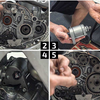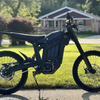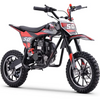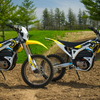How Long Does an Electric Dirt Bike Battery Last? Extend Lifespan Pro Tips
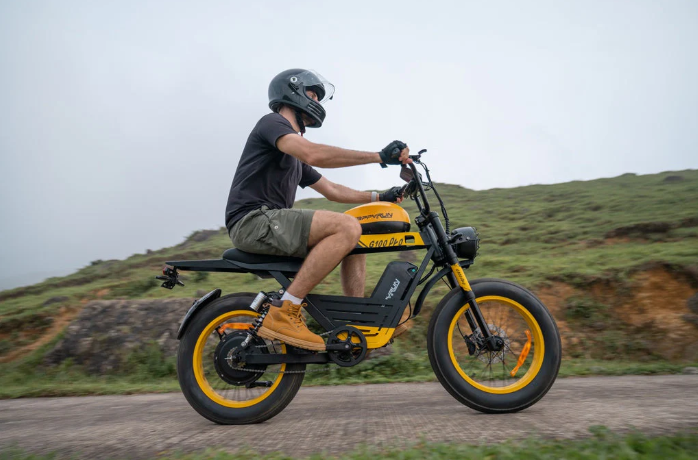
When riders ask how long does an electric dirt bike battery last, they usually mean two things: 1) how long it runs per charge (today’s ride time), and 2) how long the pack will last over months/years before it noticeably fades (total lifespan). The real answer depends on chemistry (lead-acid vs lithium-ion), pack size/voltage, terrain, rider weight, temperature, tire choice, and throttle habits.
Here’s the quick snapshot you can trust: mainstream kids’ 36V mini bikes that use sealed lead-acid (SLA) commonly advertise up to ~40 minutes of continuous run time; real backyard sessions usually land between 20–40 minutes depending on weight, hills, and surface. Adult lightweight 60V trail platforms publish steady-speed cruise figures like ~43 miles at ~25 mph (or ~75 km)—think roughly 1.5–3 hours of mixed trail riding after you adjust for hills, stops, and fun bursts.
For lifespan, SLA packs often give ~200–300 cycles before capacity loss becomes obvious, while modern lithium-ion holds up for hundreds of cycles—and can last much longer if you avoid staying full, avoid deep discharges, keep it cool, and store it around 40–60% when idle. These care habits are repeatedly recommended by battery researchers and technical references.
Below you’ll find plain-English numbers for kids and adults, a fast way to convert spec-sheet miles into hours, and 18 field-tested care tips that extend both ride time and pack lifespan—without babying the bike.
Part 1 — Today’s Ride Time: Real-World Per-Charge Numbers

Kids (36V minis, typically SLA)
-
Typical published spec: “up to 40 minutes” of continuous use, top speed ~15–17 mph. Real sessions vary with rider weight, temperature, and hills. Expect ~20–40 minutes in mixed backyard/park riding.
Representative anchor you can use once, brand-light: a 36V mini electric dirt bike suited to supervised yard practice and mellow dirt loops. Link where it’s helpful in your page flow.
Adults (lightweight trail, ~60V lithium)
-
Typical steady-speed spec (used by brands/retailers for apples-to-apples): ~43 miles @ ~25 mph (Talaria Sting) and ~75 km cruising (Light Bee X), with common charge times ~2–3.5 hours; some 2025 materials list ~2-hour fast charging when using compatible gear.
Convert miles → hours fast:
If a bike claims 46 mi @ 25 mph, that’s ~1.84 hours at a constant cruise. Real trails mean braking, corners, climbs, and short sprints—so expect roughly 60–80% of that in practice: ~1.1–1.5 hours for tight singletrack, ~1.5–1.8 hours for open hardpack. (Brands publish these best-case steady-speed numbers specifically so you can compare models fairly.)
Part 2 — Pack Lifespan: Years and Cycles (Not Just “Hours Today”)

Lead-acid (SLA) — common on budget kids’ bikes
SLA packs are inexpensive but age faster: ~200–300 cycles is a widely cited deep-cycle lifespan before capacity drop becomes significant; heat and frequent deep discharges shorten that. Storing discharged or freezing can permanently damage them.
Lithium-ion — common on adult trail bikes (and some premium youth)
Li-ion lasts hundreds of cycles and ages slowest when kept cool and not held at full for long periods. Storing around 40–60% state of charge (SoC) is repeatedly recommended by battery researchers; avoiding high temperature and high voltage dwelling is key to longevity.
A few retailers also disclose indicative lithium cycle life figures (e.g., “~500 cycles before reduction”) for popular 60V trail bikes—useful as a baseline when comparing models.
Part 3 — 12 Factors That Change Your Runtime (and how to game them)
- Speed: aero and rolling losses rise fast above ~20 mph.
- Terrain: sand/mud and steep climbs drain watt-hours quickly.
- Rider + gear weight: more mass = more current draw.
- Tires & pressure: soft knobbies and low PSI increase rolling resistance.
- Mode & throttle: “Sport” mapping and repeated WOT spikes eat range.
- Temperature: cold temporarily reduces available capacity; heat accelerates degradation.
- Drivetrain drag: dry chains and gritty bearings waste energy.
- Gearing: overly short gearing raises rpm at cruise; overly tall hurts climbs.
- Battery age: older SLA falls off much faster than healthy lithium.
- Wind & elevation: headwinds and high altitude (where you ride faster to “feel the same”) cut miles.
- Stops/starts: technical sections cost energy vs. constant cruise.
- Rider smoothness: coasting and momentum preservation are “free miles.”
Part 4 — Pro Care Tips to Extend Ride Time and Lifespan
A) Lithium-ion best practices (adult bikes & some youth)
- Store at ~40–60% SoC if idle for more than a week. Don’t park at 100% for long periods.
- Charge cool (garage ventilation helps). Heat is the #1 battery stressor.
- Avoid deep discharges when it’s easy to top up; partial cycles are healthier.
- Plan your pace: use range-friendly maps for transit sections; save “Sport” for climbs.
- Keep contacts/grounds clean to reduce resistive losses.
- Balance charging (if your system supports it) keeps cells aligned over time.
B) Lead-acid (SLA) survival guide (kids’ minis)
- Never store dead; keep SLA topped to prevent sulfation.
- Avoid freezing; SLA can be permanently damaged at low temperatures when discharged.
- Expect shorter life than lithium; plan for pack replacement on multi-year ownership.
C) Universal range boosters (works for any chemistry)
- Tires for the day: pick lower-rolling-resistance treads for hardpack days; add a few PSI if conditions allow.
- Chain care: clean and lube; check tension—drag robs miles.
- Travel light: ditch racks or tools you won’t need.
- Momentum mindset: look ahead, keep flow, brake less, coast more.
Part 5 — Quick Reference Tables (so you can sanity-check claims)
A) Per-charge ride time
|
Segment |
Common published spec |
Realistic expectation |
|
Kids 36V minis (SLA) |
Up to ~40 min continuous; ~15–17 mph top speed |
~20–40 min mixed riding (weight/terrain/temp dependent). |
|
Adult 60V trail |
~43 mi @ ~25 mph / ~75 km cruising |
~60–80% of spec in hours on real trails (≈ 1.1–2.4 h); closer to spec on smooth hardpack. |
|
Charge time |
~2–3.5 h typical; some list ~2 h fast charge |
Plan ~2–3 h at home; confirm accessory fast-charger support. |
B) Lifespan (cycles/years)
|
Chemistry |
Typical cycle life |
What shortens life most |
|
SLA (kids) |
~200–300 cycles (deep-cycle) |
|
|
Lithium-ion (adult) |
Hundreds of cycles; many disclose ~500+ before notable drop |
High temp, dwelling at 100% SoC, repeated 0–100% cycles. Store at ~40–60% when idle. |
Part 6 — Estimating Your Hours (2-step math you’ll actually use)
-
Grab the brand’s steady-speed range (e.g., 43 mi @ 25 mph).
-
Convert and discount for your terrain:
-
- Hours at cruise = 43 ÷ 25 = 1.72 h.
- Tight trees/tech: × 0.6–0.7 → ~1.0–1.2 h.
- Mixed loops: × 0.75–0.85 → ~1.3–1.5 h.
- Fire road/gravel cruise: × 0.9–1.0 → ~1.5–1.7 h.
This aligns with how brands publish numbers and what riders report when conditions are less than “perfect-flat 25 mph.”
Part 7 — Charging Game Plans (to ride more with the pack you own)
- Home top-up + lunch charge doubles short evening loops.
- Accessory fast charger (if approved) can cut wait times to about ~2 hours on some 60V systems—check your model and warranty notes.
- Back-to-back sessions: rotate riders while one bike cools/charges.
- Trip planning: campgrounds with outlets or garages near trailheads = free range extender.
Part 8 — Kids vs Adults: Set expectations early
For kids, runtime is intentionally short: safety, weight, and budget come first. Plan several short sessions with breaks. For adults, compare range @ 25 mph, weight, and charge time across the 60V class; treat headline “max” numbers as best-case cruise, not aggressive trail pace. (Talaria and Light Bee X spec pages are solid benchmarks for this class.)
If you need a neutral shopping anchor once, link “36V mini electric dirt bike” to a representative kids’ listing for supervised practice.
Conclusion (150–300 words)
So, how long does an electric dirt bike battery last? On a single charge, kids’ 36V minis typically deliver ~20–40 minutes of real-world riding (with a catalog spec of up to ~40 minutes), while modern 60V adult trail bikes translate steady-speed specs like ~43 mi @ ~25 mph or ~75 km cruising into roughly 1.1–2.4 hours on actual trails once you factor in climbs, stops, and playful throttle.
On the multi-year timeline, SLA chemistry commonly reaches ~200–300 cycles, whereas lithium-ion lasts significantly longer—especially if you avoid heat, avoid “parked at 100%,” and store at ~40–60% SoC when idle.
The good news: you control many of the variables. Ride smoother, choose efficient tires for the day, keep the chain clean, and use range-friendly modes between features. Charge in a cool spot and don’t stress about perfection—partial top-ups are healthy for lithium, and even small habits add up.
If you’re outfitting a young rider, embrace short, supervised sessions; if you’re an adult chasing longer loops, build a charging plan (or invest in an approved fast charger) to keep the fun rolling. With a little care, your battery will do exactly what it’s built for: turn quiet torque into more trail time, week after week.
Frequently Asked Questions
How long does an electric dirt bike battery last per charge?
Kids’ 36V minis commonly advertise up to ~40 minutes, with ~20–40 minutes typical in the real world. Adult 60V trail bikes often publish ~43 mi @ 25 mph or ~75 km cruising, which becomes ~1.1–2.4 hours on mixed trails.
How long does a Razor dirt bike battery last?
Razor MX650’s official spec lists up to 40 minutes of continuous use from its 36V pack; terrain, temperature, and rider weight can shorten that.
How long does a dirt bike battery last over the years?
SLA packs typically deliver ~200–300 cycles; lithium-ion lasts much longer if you keep it cool, avoid dwelling full, avoid deep discharges, and store at ~40–60%.
Does fast charging damage the battery?
Use brand-approved chargers only. Some platforms now support ~2-hour refills with compatible chargers; heat is the bigger enemy, so charge in a cool, ventilated space.
What’s the single best habit to extend lifespan?
Keep lithium packs away from heat and from long stays at 100%; store around 40–60% SoC when the bike sits. For SLA, never store discharged and avoid freezing.
